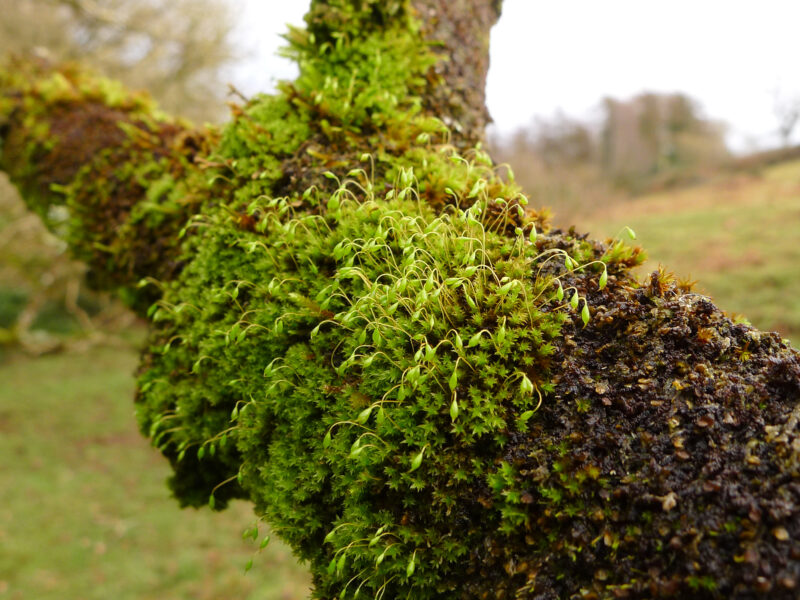Identification notes
Zygodon rupestris is very similar in appearance to Zygodon viridissimus. It tends to have a bright yellow-green colour, but Z.viridissimus can have this appearance as well. Typically it is found on old trees in parkland or on the edge of ancient woodland so it is worth keeping an eye out for it in these habitats. rarely it has been found on base rich rocks.
The leaves are often longer and narrower than Zygodon viridissimus but this is not really a reliable field character and microscopic examination of the leaf gemmae is essential for identification. Like other Zygodon, these are easily obtained by agitating a few shoots in a drop of water on a microscope slide. They are uniseriate, without the longitudinal cross walls of Z.viridissimus (although rarely there is an oblique cross wall), and they tend to be broader in relation to their length when compared with Z.conoideus. The critical feature is that although the cell wall partitions of the gemmae are transparent when young, they rapidly become dark. In Z.conoideus the cells walls are always clear and transparent. This feature was not emphasised enough in the past so that it has very probably been over-recorded and confused with Z.conoideus.
Read the Field Guide account










